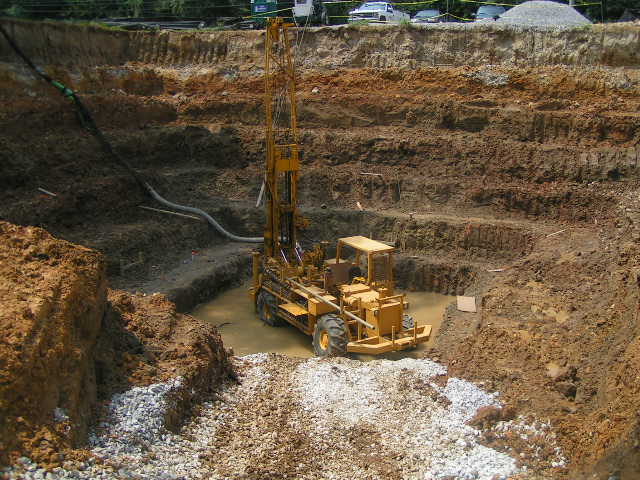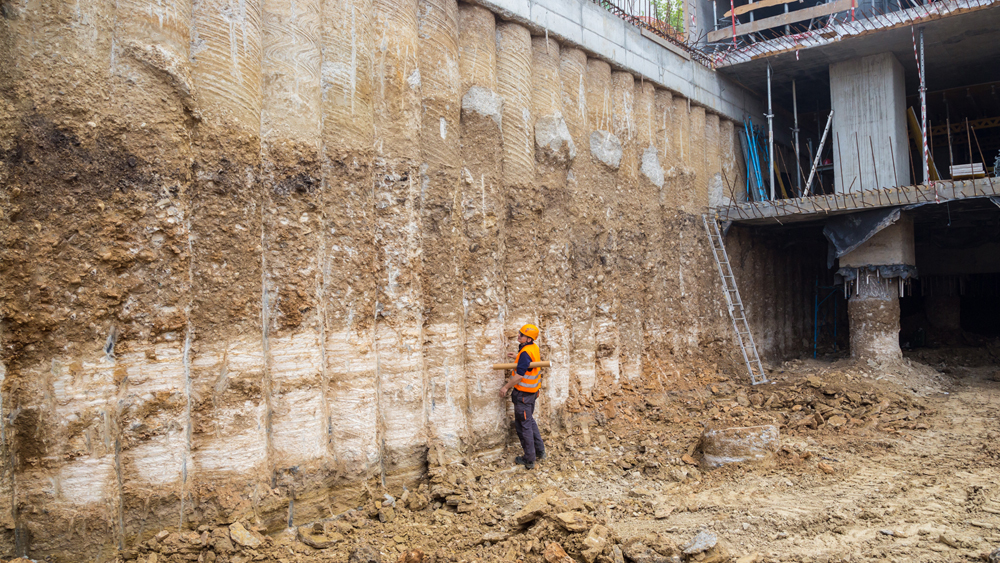Project Geotechnical Engineer for Tailored Website Evaluations
Project Geotechnical Engineer for Tailored Website Evaluations
Blog Article
Exactly How Consulting Engineers Enhance Geotechnical Engineering Projects: Insights Into Their Knowledge, Approaches, and Collaborative Approaches
Consulting designers are critical in enhancing geotechnical design tasks, using their specialized understanding to browse the complexities of subsurface conditions. Their approaches encompass a series of site examination techniques, including Standard Infiltration Tests (SPT) and Cone Infiltration Tests (CPT), which inform critical choices throughout the layout and building and construction phases. In addition, their collective techniques foster interaction amongst diverse project stakeholders, inevitably forming the job's trajectory. As we take a look at the diverse functions these experts play, it ends up being clear that their contributions extend beyond technological proficiency, prompting a closer check out the implications for task success.
Role of Consulting Engineers
The know-how of speaking with designers in geotechnical engineering is essential to the successful execution of construction jobs. These professionals play a pivotal role in assessing soil and rock homes, which are important variables influencing style and building and construction choices. By conducting comprehensive site examinations, seeking advice from designers accumulate necessary data that notifies the style procedure, guaranteeing jobs are improved stable and suitable ground.
Consulting engineers also offer very useful understandings into danger administration (geotechnical geologist). They identify potential geotechnical hazards, such as landslides, soil liquefaction, and negotiation concerns, allowing stakeholders to apply reliable mitigation techniques. Their expertise help in enhancing foundation designs, which can lead to significant cost savings and improved safety
In addition, consulting designers act as an important web link in between job proprietors, architects, and service providers. Their capability to equate intricate geotechnical data right into actionable recommendations cultivates collaboration and facilitates educated decision-making throughout the task lifecycle. This multidisciplinary strategy not only improves task performance yet also ensures conformity with regulatory criteria and ideal methods.
Trick Methods in Geotechnical Design

One main methodology is site investigation, which involves carrying out area examinations and laboratory analyses to collect data on subsurface conditions. Techniques such as Standard Infiltration Screening (SPT) and Cone Infiltration Screening (CPT) are commonly made use of to review dirt stratigraphy and strength. In addition, geophysical methods, including seismic and electrical resistivity surveys, give non-invasive means to assess subsurface characteristics.
An additional crucial methodology is mathematical modeling, which makes it possible for designers to simulate various circumstances and predict exactly how soil-structure interactions will act under different loading conditions. Limited Component Analysis (FEA) is a typical strategy employed in this context.
In addition, the layout of foundations, maintaining frameworks, and earthworks counts heavily on these methods - geotechnical geologist. By incorporating sophisticated analytical devices with field information, consulting designers can develop customized options that deal with specific job difficulties, inevitably adding to the stability and safety of building jobs
Significance of Dirt Evaluation
Dirt analysis acts as a foundational element in geotechnical design, giving crucial understandings into the physical and chemical residential properties of dirt necessary for reliable building preparation. Comprehending soil characteristics is essential for identifying its load-bearing capacity, water drainage actions, and possibility for negotiation or instability. Thorough dirt investigations, consisting of sampling and lab screening, aid recognize parameters such as dirt kind, wetness web content, thickness, and shear stamina.
These evaluations notify the option of suitable construction techniques and materials, ultimately influencing task security and durability. As an example, cohesive dirts may require different foundation designs contrasted to granular soils, requiring tailored design options. Soil analysis aids in determining contaminants that can pose risks to human health or the environment, permitting for the development of reduction strategies.
Including soil evaluation right into the early stages of job growth helps to lessen unanticipated difficulties, making certain that engineers can expect and resolve possible problems before they escalate. By establishing a thorough understanding of the site problems, speaking with engineers can optimize design effectiveness and decrease costs, thus enhancing the total success of geotechnical design jobs.
Collective Techniques in Projects
Successful geotechnical projects frequently hinge on collective strategies that unite diverse competence from different techniques. Reliable cooperation amongst getting in touch with engineers, geologists, ecological researchers, find this and building specialists is important for attending to complicated difficulties and maximizing job end results. By leveraging the distinct abilities and expertise of each employee, jobs can take advantage of a holistic understanding of the site conditions, regulative demands, and engineering restrictions.
Routine interaction and interdisciplinary meetings you could try here promote the sharing of understandings and foster a culture of teamwork. These joint initiatives make it possible for the identification of prospective threats early in the job lifecycle, allowing for timely reduction strategies. Additionally, incorporating comments from stakeholders, including local communities and governing agencies, ensures that all perspectives are considered, boosting job approval and compliance.
Additionally, the combination of sophisticated innovations, such as Geographic Info Solution (GIS) and Structure Information Modeling (BIM), further boosts partnership. These devices permit for the real-time sharing of information and visualization of geotechnical problems, promoting educated decision-making. Ultimately, a joint approach not only improves job implementation but likewise lays the structure for ingenious solutions to intricate geotechnical design challenges.
Impact on Task End Results

Consulting designers utilize sophisticated methods such as threat assessment and anticipating modeling, which boost the accuracy of job projections. Their capability to integrate innovative technologies, like geotechnical instrumentation and data analytics, even more improves the layout and building processes. Because of this, jobs experience improved performance, lowered expenses, and reduced hold-ups.
Moreover, cultivating reliable communication and cooperation among staff member improves analytical abilities. When challenges occur, an unified front click to read enables swift recognition of solutions, preventing prospective obstacles. Ultimately, the collective initiatives of seeking advice from engineers add to greater quality results, ensuring that tasks satisfy both governing criteria and customer assumptions.
Conclusion

Report this page